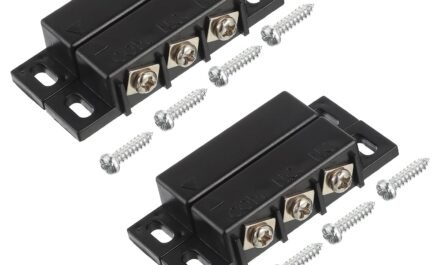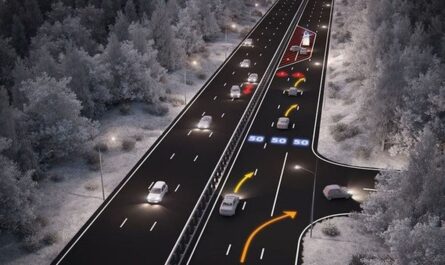Hazardous location lighting serves a vital purpose in numerous industrial settings by providing safe and effective illumination in areas where flammable gases, vapors, or dusts may be present. Traditional lighting sources like incandescent bulbs pose ignition risks in these environments, making LED lighting the preferred option. As an intrinsically safe semiconductor light source, LEDs produce virtually no heat or sparks, eliminating the danger of igniting combustible materials.
Advantages of LED Technology
LED lights offer numerous advantages over traditional lighting sources for hazardous locations. Hazardous Location LED Lighting are more durable and resistant to impact, vibration, moisture and corrosion. They have lifespans up to 50,000 hours which is at least 10 times longer than fluorescent or incandescent bulbs. This reduces maintenance and replacement costs. LEDs are also more energy efficient, using up to 90% less power than traditional lighting. Their efficient operation promotes sustainability while lowering energy bills. Compact LED fixtures also generate less heat, further reducing explosion risks.
Safety Certifications for Hazardous Location Compliance
For lighting to be approved for use in hazardous locations, it must pass rigorous testing and receive certifications affirming its safety. LED fixtures designated for these environments are certified by organizations like FM, UL, CSA or ATEX to comply with NEC, IECEx and ATEX standards. Lights undergo tests simulating real-world conditions to evaluate explosion-proof characteristics. Enclosures are assessed to ensure they are dust and water tight with no ignition sources inside. Strict manufacturing controls are in place. These certifications provide assurance that approved LED lights will not cause sparks or overheating even in contaminated atmospheres.
Gas-Proof and Dust-Proof LED Lighting Options
There are two main designations for Hazardous Location LED Lighting – gas-proof and dust-proof. Gas-proof fixtures, certified as explosion-proof or flameproof, can be used where fires or dust explosions from gas, vapors or mist are possible. They have enclosures that contain any explosion and withstand internal pressure spikes. Dust-proof lights certified as dust-ignition proof can be installed in areas with airborne combustible dust present. Their tight enclosures prevent dust from entering or accumulating to eliminate explosion risks. Proper lighting selection based on the hazards present is important for safety.
Applications for Hazardous Location LED Lighting
Oil, Gas and Petrochemical Plants
Refineries, gas processing facilities, pipelines and oil rigs rely on LED lighting to illuminate areas with flammable gas, vapor or dust hazards. From control rooms to pump yards to storage tanks, LEDs provide durable, energy-efficient illumination safely. Their resistance to impacts, weathering and corrosion ensure lights maintain operation in harsh plant conditions.
Mining Operations
Underground mines, quarries, crushers and conveyors all require strong, impact-resistant fixtures able to withstand dust, moisture and vibrations. LED lights are ideal for their intrinsically safe, low-maintenance operation in these difficult environments. They can illuminate tunnels, elevators, machinery and work faces without sparking underground.
Grain Elevators and Food Processing Facilities
Facilities handling powders and dusts generated from grains, fruits, sugars and spices depend on dust-ignition proof fixtures. LEDs safely illuminate areas prone to combustible atmospheric conditions from food particles like flour mills, grain elevators, warehouses and conveyors. Good visibility is vital for safety and productivity.
Warehouses and Shipping Facilities
Distribution centers, freight yards and ports handling volatile chemicals or dust-laden goods need suitable lighting. Gas-proof LEDs illuminate truck bays, holding areas and indoor storage facilities with fewer replacements required than traditional bulbs. This improves workflow and security.
Additional Benefits of Hazardous Location LED Lighting
Beyond safety and energy efficiency advantages, LED lighting delivers productivity benefits too. Superior color rendering ensures colors and details are clearly visible. Dimmable and adjustable light distribution improves task visibility. Instant on/off prevents dangerous step changes that can disturb settled dust layers. Sensors and controls enable lighting to activate only as needed, boosting savings. Integral backup battery options maintain egress illumination if power fails, ensuring safe evacuations. With lower heat generation, LEDs also reduce safety risks from burnt insulation or physical hazards in sweltering environments. Overall, LED technology revolutionizes lighting for hazardous locations by promoting safety, sustainability and productivity gains together.
Specifying and Installing Hazardous Location LED Lighting
When specifying new lighting systems or retrofitting existing fixtures for hazardous areas, key factors to consider include:
– Area classifications (Zone 1, Zone 2, Division 1, Division 2) based on gas/vapor/dust hazards
– Appropriate certifications (UL, CSA etc.) for the gases/locations involved
– Luminaires suitable for ceiling/wall mounting based on space and task needs
– Dimmability, motion/ambient light sensors & controls as needed
– Backup battery options in critical applications
– IP/NEMA ratings for protection from environmental factors
– Downtime budgets – consider long LED lifespan
– Maintenance/replacement ease
Qualified electricians should install fixtures following NEC guidelines & manufacturer instructions for hazardous location compliance. Regular inspections confirm operational safety over the long-term. With the right LED solutions installed according to industry best practices, lighting enables hazard mitigation rather than hazard creation.
As the predominant lighting technology used across industry, LED fixtures deliver numerous advantages for hazardous locations over traditional lighting. Their intrinsically safe, energy-efficient and durable characteristics underpin their critical role illuminating unsafe atmospheres. When specified, approved and installed correctly according to certifications and codes, LED lighting enables productivity and safety hand-in-hand in diverse hazardous industrial conditions worldwide.
About Author:
Ravina Pandya, Content Writer, has a strong foothold in the market research industry. She specializes in writing well-researched articles from different industries, including food and beverages, information and technology, healthcare, chemical and materials, etc. (https://www.linkedin.com/in/ravina-pandya-1a3984191)
*Note:
1. Source: Coherent Market Insights, Public Source, Desk Research
2. We have leveraged AI tools to mine information and compile it.




